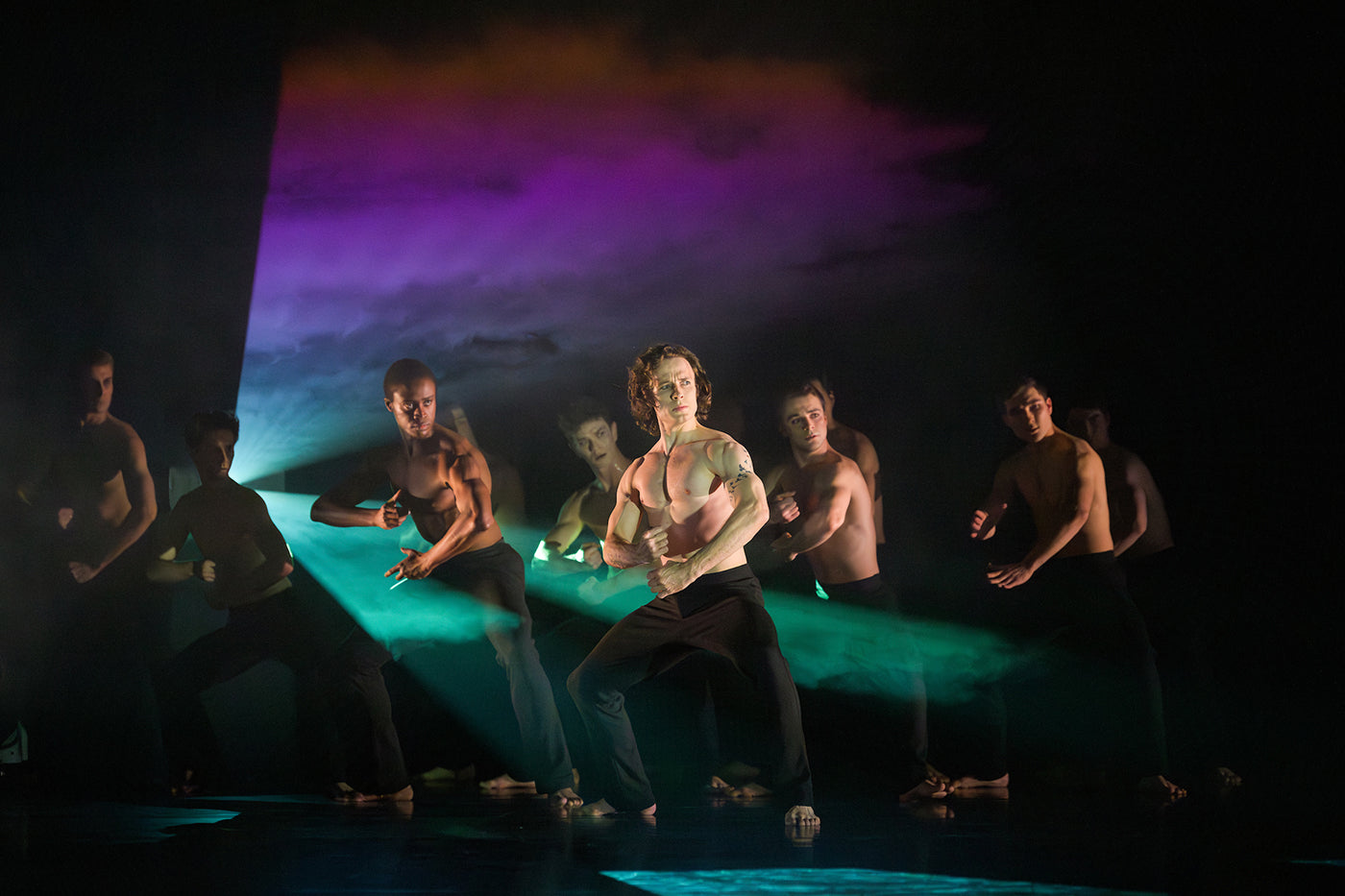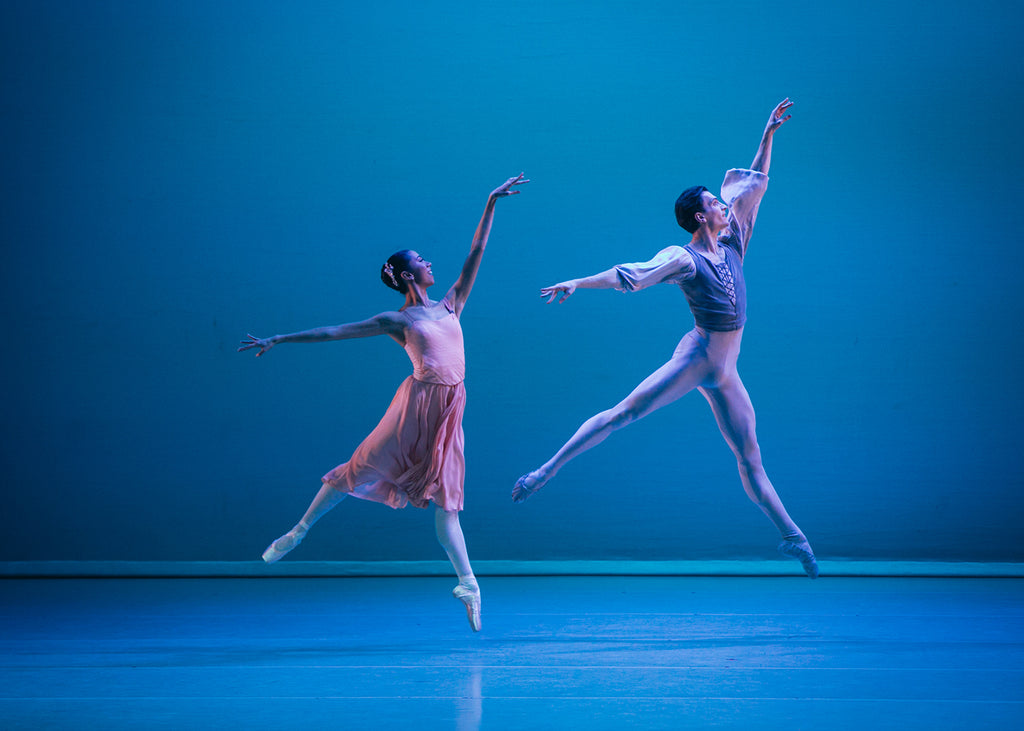Restless Dance Theatre’s “Seeing Through Darkness,” inspired by the “flowering and imperfect expression”[3] within the paintings and drawings of Georges Rouault addresses light and its trace elements in a different way again. Initially playfully reminiscent of the cut-out silhouettes of Fred Astaire and Ginger Rogers dancing on a record player illuminated so that their shadows, projected on the walls, danced about the room, “Seeing Through Darkness” uses moving lights on a curved track to alter the dancers’ projected shadows and the colours they cast. And where Guerin invited me to yield and resist, now the opportunity to query, as Rouault did: “what do we leave behind?” Writ large on the tall screens which frame the stage and make of it a record, the silhouettes in a spectrum of colours overlap and flow. As the lights move, scale follows suit, and so the cast is not only multiplied, but towering in full magnificence.
Restless Dance Theatre, Australia’s leading dance company working with neurodiverse and disabled artists, accentuate not only the physical form the way Rouault did, but love. And it is love which continues to chime with collective joy in an excerpt from Dancenorth Australia’s “Wayfinder.” Featuring the artwork of Hiromi Tango, a colourful, knitted embodiment of unbridled ebullience, the dancers scoop up the many squiggly threads by the handful, further activating their presence and melding colour ways. A timely reminder to “transcend the words that [seek to] define us” and be lead, instead, by “the stars, the waves, and the sun,”[4] for that is where the authentic is situated.
A fitting close, last stop: awe and wonder.











comments